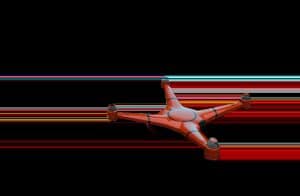Quantum Sensing Arrays: Wave Detection
The field of quantum sensing has been rapidly advancing and has immense potential for revolutionizing the way we detect and measure waves. With advancements in quantum technology, new methods of sensing and detecting waves are emerging, and one of the most promising ones is the use of quantum sensing arrays. These arrays use quantum mechanics principles to detect and measure waves with unparalleled accuracy and sensitivity, making them a game-changer in various fields such as scientific research, medical diagnostics, and communication technology. In this article, we will delve into the world of quantum sensing arrays and explore their capabilities in wave detection.
The Basics of Quantum Sensing Arrays
Quantum sensing arrays are devices that use quantum mechanics principles such as quantum entanglement and superposition to detect and measure waves. At their core, these arrays consist of a large number of quantum sensors that are spread over a wide area and are connected together to form a network. Each sensor in the array is made up of tiny components, such as atoms or molecules, which can interact with the waves being measured. These sensors are highly sensitive to even the slightest changes in their environment, making them perfect for detecting and measuring waves.
The beauty of quantum sensing arrays lies in their ability to simultaneously measure multiple waves with high precision and sensitivity. Unlike traditional sensors that can only detect one type of wave, quantum sensing arrays can detect and measure a wide range of waves, including electromagnetic waves, gravitational waves, acoustic waves, and more. This versatility makes them suitable for a variety of applications, making them a valuable tool in many industries.
Unparalleled Accuracy and Sensitivity
One of the main advantages of quantum sensing arrays is their ability to detect waves with unparalleled accuracy and sensitivity. Unlike traditional sensors, which are limited by the laws of classical physics, quantum sensors can exploit the principles of quantum mechanics to measure waves with extreme precision. The concept of quantum entanglement, where two particles are connected in such a way that the state of one affects the state of the other, enables quantum sensors to detect changes in waves at an atomic level. As a result, quantum sensing arrays can measure waves with an accuracy and sensitivity that was previously unattainable.
This high level of accuracy and sensitivity makes quantum sensing arrays ideal for various applications. In scientific research, these arrays can be used to study and understand the properties of waves in great detail. In medical diagnostics, they can be used for early detection of diseases in their early stages, leading to improved treatment outcomes. In communication technology, quantum sensing arrays can be used to enhance the performance of communication systems, leading to faster and more reliable data transfer.
The Future of Wave Detection
Quantum sensing arrays are still in their infancy, but their potential for revolutionizing the field of wave detection is immense. With ongoing research and advancements in quantum technology, these arrays are expected to become even more powerful and versatile in the future. Furthermore, with the development of scalable and cost-effective manufacturing techniques, quantum sensing arrays will become more accessible to various industries, leading to even more innovative applications.
In conclusion, quantum sensing arrays are a groundbreaking technology that has the potential to transform the way we detect and measure waves. With their unparalleled accuracy and sensitivity, they open up a whole new world of possibilities in fields such as scientific research, medical diagnostics, and communication technology. As we continue to unlock the full potential of quantum technology, we can only imagine the groundbreaking applications that quantum sensing arrays will bring in the future.









